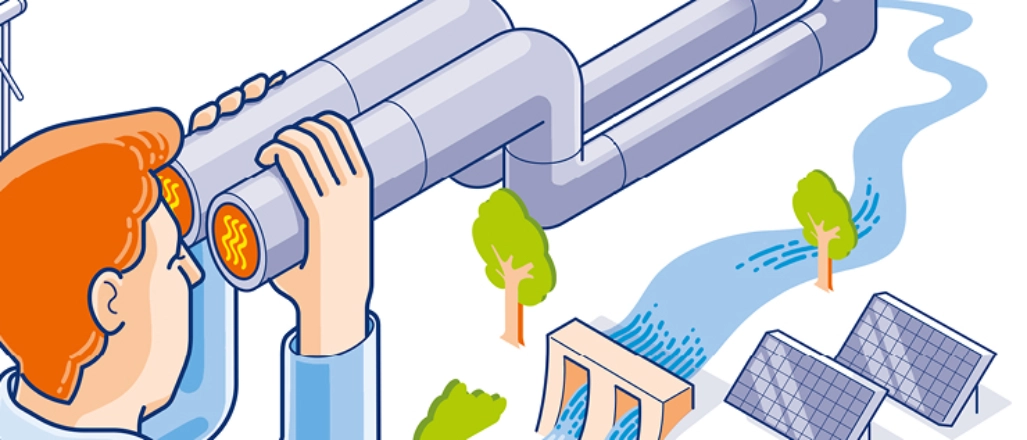Efficient, simple, comfortable.
Discover district heating.
Perfectly warm - with district heating
With district heating, we bring ready-to-use heat directly into flats, houses and company buildings omitting diversions via your own heat generation plant. Boilers, chimneys and fuel storage are therefore not an issue anymore - nor are boiler maintenance, chimney sweeps or fuel purchases. In addition, district heating offers a very high security of supply and contributes significantly to keeping emissions of air pollutants and greenhouse gases at a minimum.
For more than 120 years, parts of cities in Germany have been heated with district heating. Via a network of pipes, thermal energy is transported as hot water from a central heating plant to your home. Different fuels are used to heat the water. In your case, mainly natural gas. Currently, the share of renewable energies used in heat generation is increasing. In order to optimise the utilisation of the fuels, the technology of combined heat and power is used.
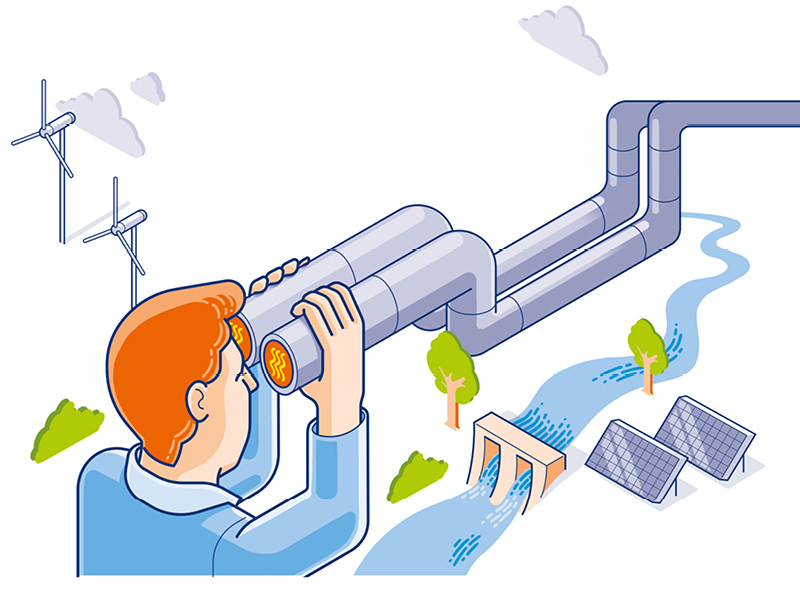
The principle of cogeneration enables the simultaneous generation of electricity and heat. Fuels used are utilised much more efficiently, and the heat generated during the electricity production is not released into the environment, but is supplied to households and companies. Gradually, more and more renewable energies and biogas are incorporated as fuel. This makes district heating a climate-friendly way of generating heat with a much more positive energy balance compared to heating with natural gas or oil.
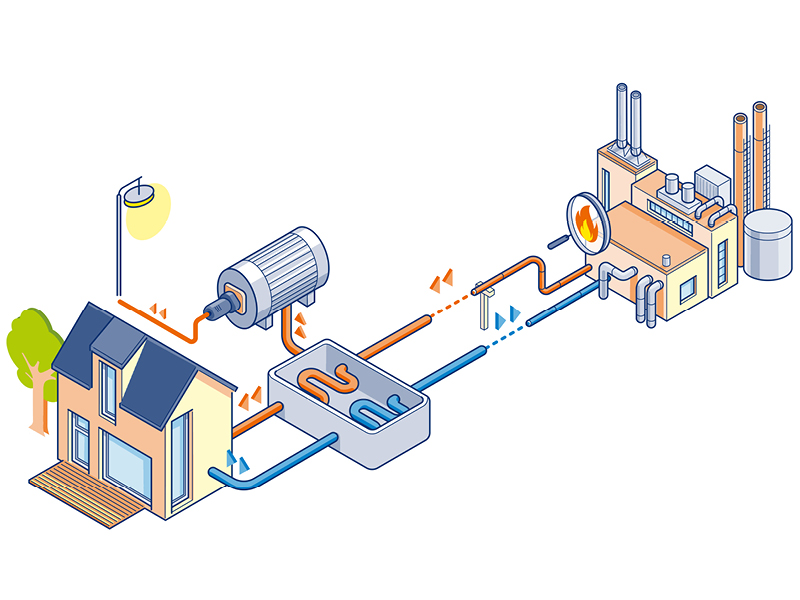
You may have seen them before: thick pipes laid above or below ground across the city. Through these pipes, heated water is conveniently transported to your home. Via a heat exchanger at a transfer station in your house, usually in the basement, the heat reaches your home ready for use - for heating and as hot water. Afterwards, the cooled water flos back to the heating power station ghrough the closed circuit and is heated again. One of the advantages of this process is that no extra heating system is needed in the house.
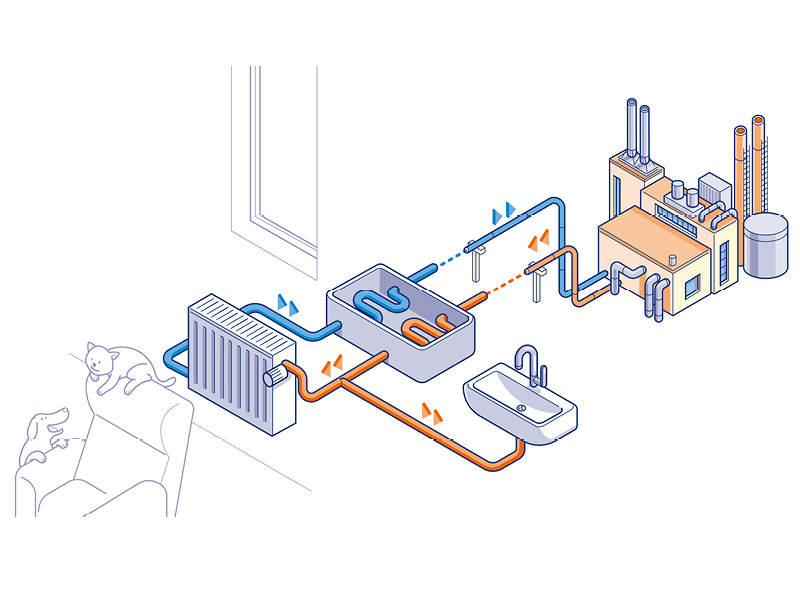
- District heating is delivered to your home ready for use. An additional heat generation system and a chimney are not necessary.
- You don't have to worry about regular boiler maintenance or additional costs such as for a chimney sweep.
- Unpleasant smells, exhaust fumes or noises in the house are no longer an issue.
- Regarding the supply with natural gas, district heating plants have priority of supply over large industrial consumers. This gives you, the end consumer, the good feeling of a secure energy supply.
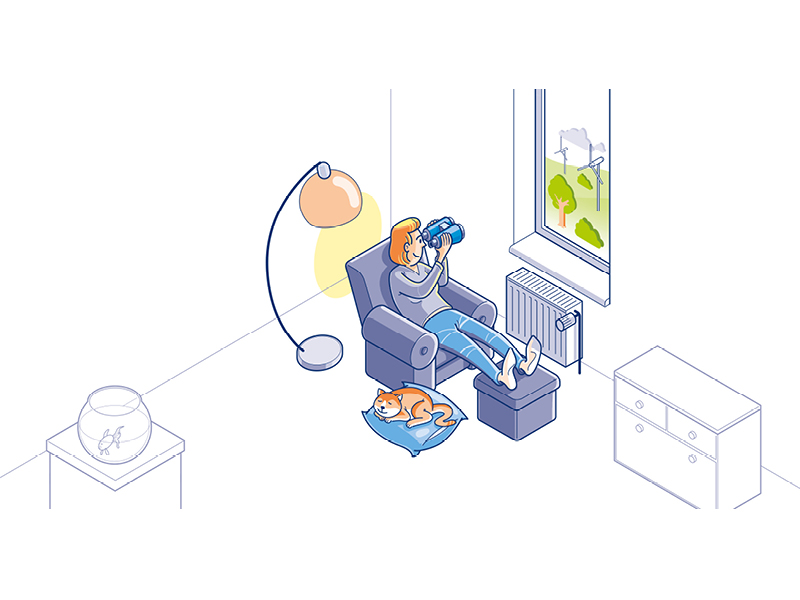
The price will increase - and not slightly. Unfortunately, since district heating is largely produced from natural gas, this has to be said this directly. The future price development thus depends on the natural gas market. However, the use of renewable energies in district heating production is pushed forward further, which, in future, will reduce the use of natural gas in district heating.
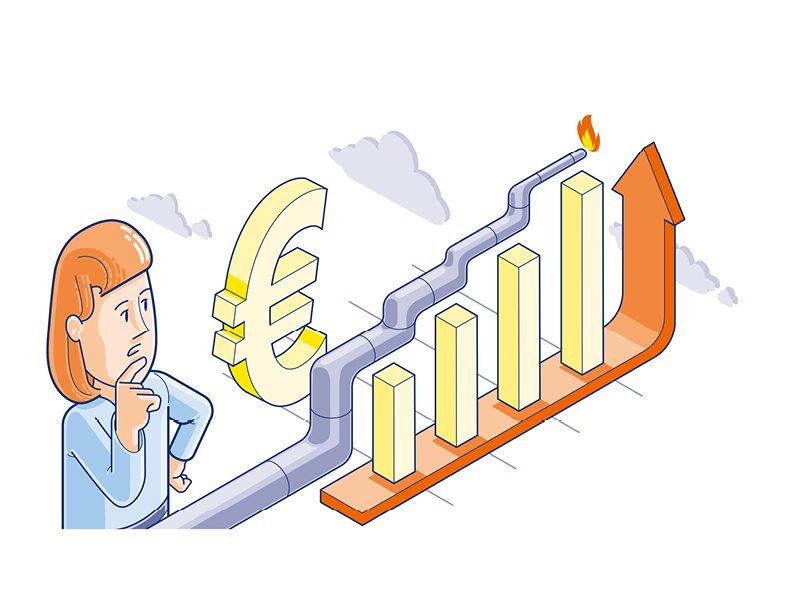
The current situation clearly shows us all that we need a rapid shift from fossil fuels (natural gas, oil, coal) to renewable energies (bio-energy, geothermal energy, hydropower, solar and wind energy). District heating is a key factor for this heat transition. If a district heating supplier invests in the use of environmentally friendly types of energy such as solar energy or biomass, this has a direct positive impact on the heat supply of thousands of households. It becomes even more environmentally friendly because the release of CO2 during heat generation is reduced.
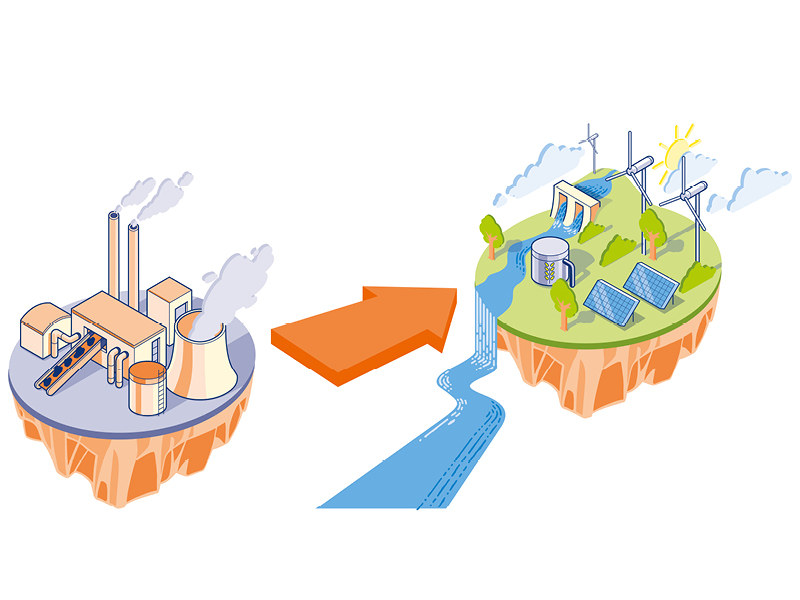
smart_display "What is district heating?"
What district heating means, and which advantages it offers, you can find out in this video.
The future of district heating is green
District heating can make a substantial contribution to the heat transition. This requires locally available renewable energies that will be integrated in the future for a CO2-free heat supply. Here, we present some of the most important energy sources. The extent to which these individual energies can contribute to decarbonising the district heating supply in Jena, Pößneck, Blankenhain and Hermsdorf depends on the respective potentials on site.
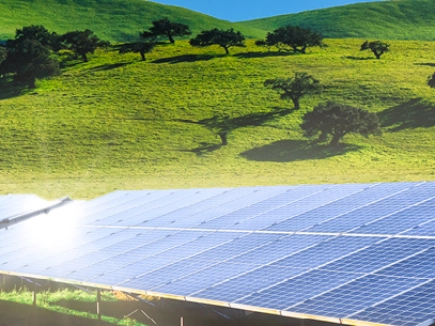
Solar energy
The connection of solar energy and district heating can be a particularly clever combination. The heating network can be used as a buffer store for the (solar) energy source which is available for a limited time only, and thus compensate for the disadvantages of solar energy. This is done either directly via solar thermal systems or via electricity from photovoltaics.
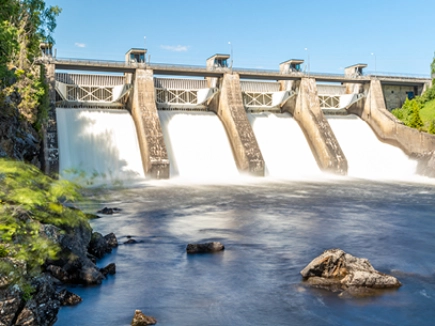
Water
Hydropower, where available, still plays an important role in the supply with renewable energy. However, the potentials are already so well exploited that further expansion of this sector is hardly possible. Still, the use of heat transported in rivers or groundwater by means of heat pumps offers great potential.
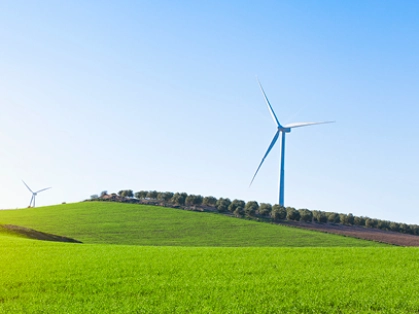
Wind power
Even though wind power is not available everywhere for geological reasons, the principle of heat generation is very simple. Similar to the immersion heater principle, water is heated in tanks using wind power and fed into the district heating network. That's it.
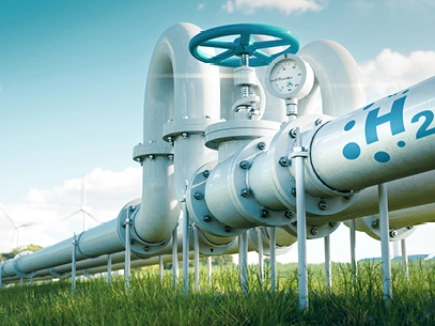
Hydrogen
The great advantage of this energy carrier is its storage and transport capability. Whenever sufficient wind or solar energy is available, water can be converted to hydrogen by electrolysis, stored for the long term and used again to generate electricity and heat during periods of low wind or sun. Hydrogen thus builds a CO2-neutral bridge.

Geo- and river thermal energy
Geo- and river thermal energy also offer considerable opportunities for green heat supply. In the case of geothermal energy, near-surface earth areas can be used via boreholes down into warmer, deeper layers of the earth or via heat pumps. River thermal energy then makes use of the thermal capacity of rivers. The great advantage is its permanent and constant availability
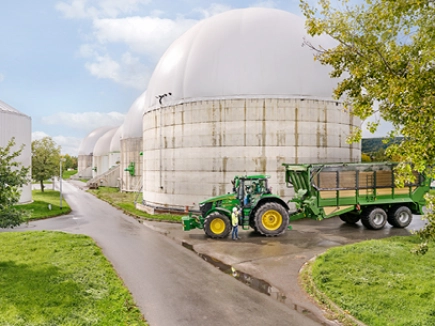
Methane from biomass
Biomethane from biological waste, residues and renewable resources is an attractive and climate-friendly option to be applied for heating. It can be used directly in plants with combined heat and power generation and connection to the district heating network, or processed and fed into the gas network.

District heating for landlords and the industry
The easiest heating supply for everybody.
An environmentally friendly energy source
Industrial waste heat is thermal energy that accumulates during industrial processes and has remained unused until now.
However, the waste heat can be used to heat buildings and other facilities, or to provide hot water.

Facts and Figures analytics
19 Mio. tons CO2
According to conservative estimates, this amount could be saved annually by using waste heat in district heating networks and by reconnecting previously individually supplied buildings.
Source: AGFW
2040
the district heating in Jena, Hermsdorf, Pößneck and Blankenhain is to be generated completely without CO2-emissions.
0,3 primary energy factor Jena
Since our district heating in Jena is generated almost exclusively with the highly efficient method of combined heat and power generation and additionally uses renewable energy sources, a particularly low primary energy factor has been determined and confirmed.
Green, green, green will be my district heating
On the way to climate neutrality, emission-free heating is of particular importance.
Together with partners, Stadtwerke Energie and Stadtwerke Jena Netze are already working on various concepts for "green district heating". By 2040 at the latest, district heating is to be produced completely without CO2-emissions.
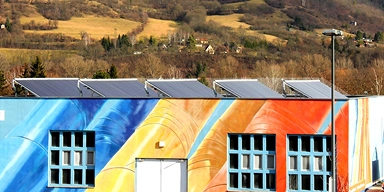
Model project on solar heat
Since 2016, the Stadtwerke subsidiary job Jenaer Objektmanagement- und Betriebsgesellschaft has been successfully generating district heating from sunlight with a model plant in Winzerla. Together with Stadtwerke Energie, the company has constructed a solar thermal system measuring just under 100 square metres. It uses solar radiation to heat water and - this is the special feature - feeds this heat directly into the district heating network.
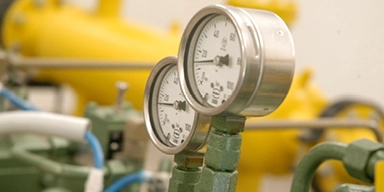
H2 on site: Hydrogen as a substitute for natural gas
In the energy model of the future, hydrogen is the most promising substitute for fossil natural gas. However, the conversion of our natural gas grid to hydrogen will still take years: Both gases have fundamentally different properties, and, moreover, there is a lack of terminal devices for the use of hydrogen. Still, there are many reasons in favour of this clean fuel.
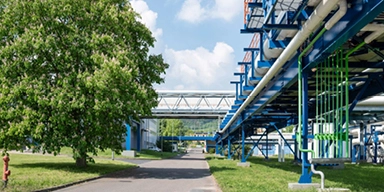
Heating network strategy 2040
Together with the Thüringer Energie AG, we are developing a strategy for decarbonising the district heating supply. In Jena, for example, the main focus is on the conversion of district heating generation at the Winzerla CHP plant. The goal is to use environmental heat.

Any questions on district heating?
You can reach our team at:
These places are supplied with our district heating:
arrow_forwardJena
arrow_forwardPößneck
arrow_forwardHermsdorf
arrow_forwardBlankenhain


